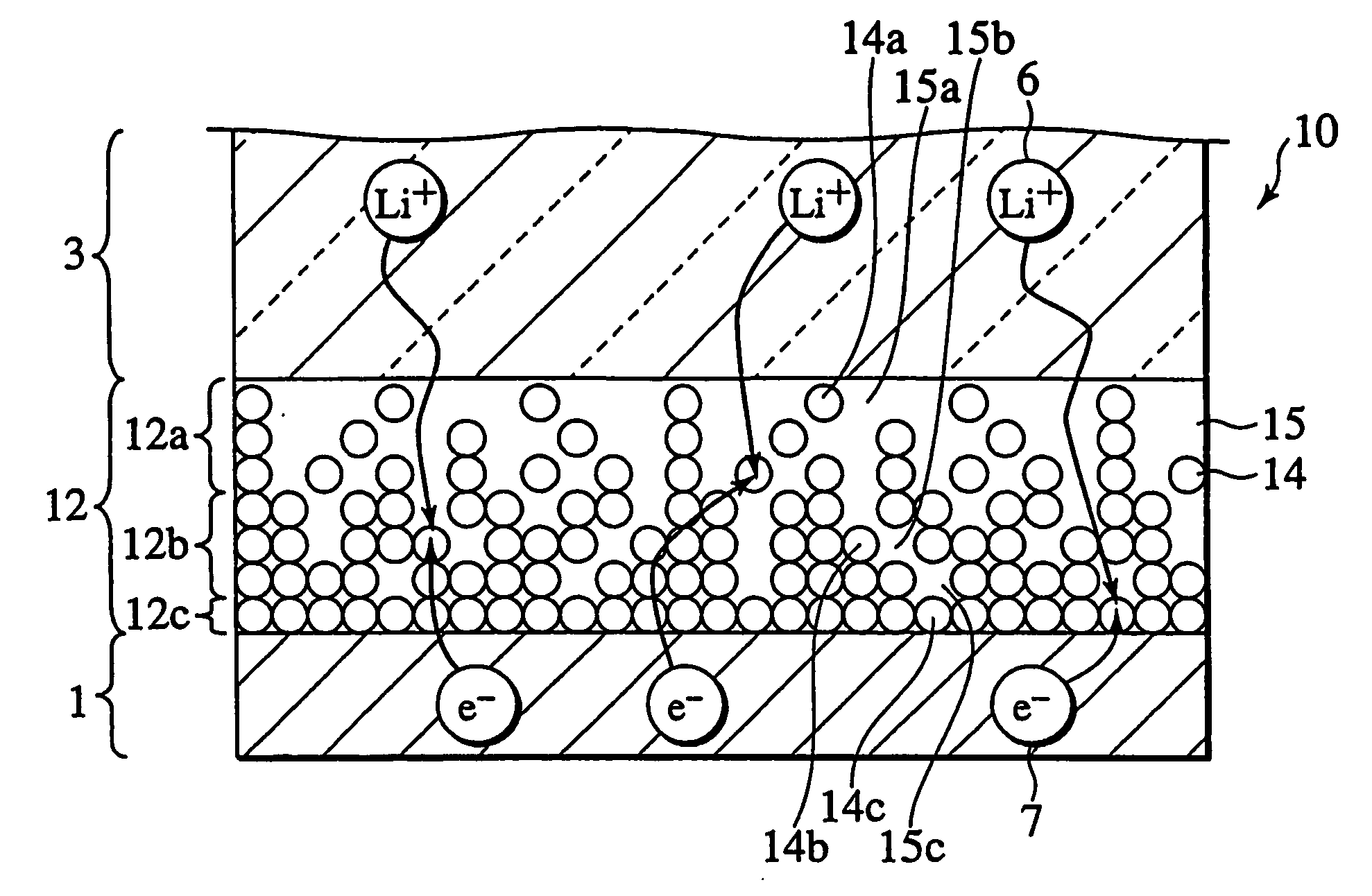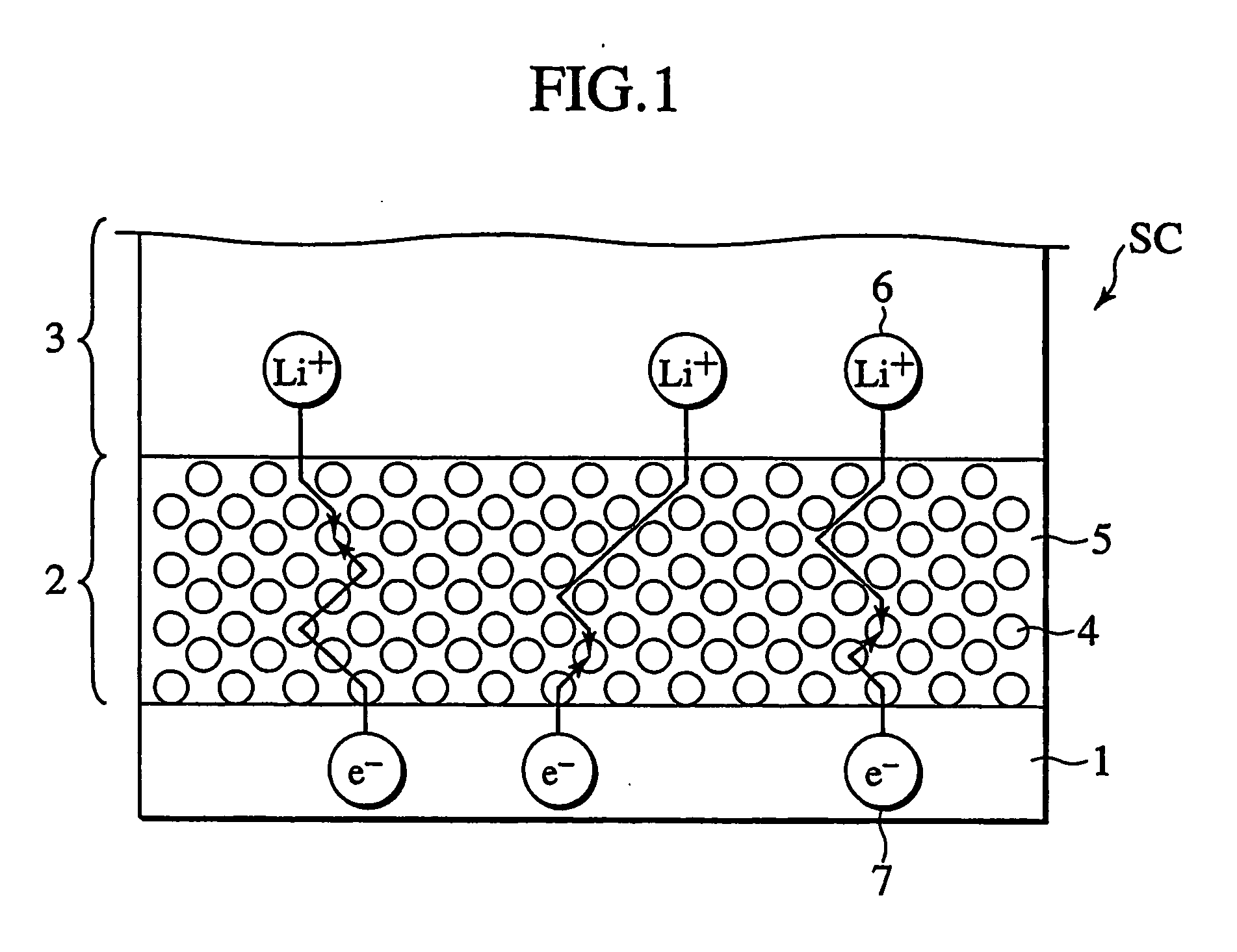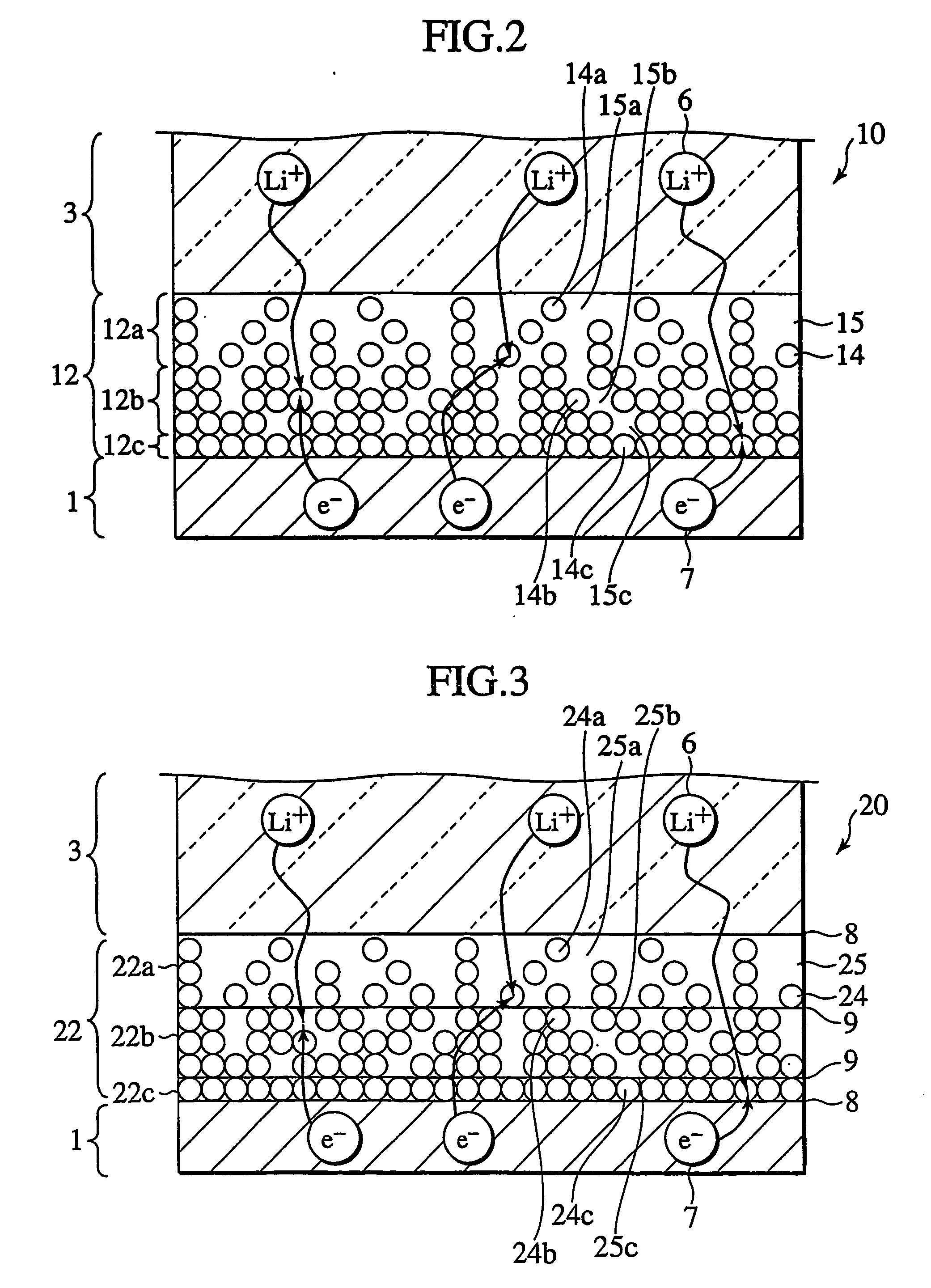Secondary cell electrode and fabrication method, and secondary cell, complex cell, and vehicle
a technology of secondary cells and electrodes, applied in the field of secondary cells, can solve problems such as charge or discharge capacity reduction, and achieve the effect of reducing cell performan
- Summary
- Abstract
- Description
- Claims
- Application Information
AI Technical Summary
Problems solved by technology
Method used
Image
Examples
first embodiment
3.1 Examples of First Embodiment
[0458] The first embodiment is exemplified below.
3.1.1 Example-1
3.1.1a Preparation of Positive Electrode Ink
[0459] A quantity (90 g in weight) of spinel structure LiMn2O4 (particle size: 0.6 μm in average) as a positive electrode active material, a quantity (5 g in weight) of acetylene black as an electrically conductive material, and a quantity (5 g in weight) of polyvinylidene fluoride as a binder were mixed, and as a solvent to this mixture a quantity (300 g in weight) of acetonitrile was admixed, thereby preparing a kind of slurry as a positive electrode ink-1. The positive electrode ink-1 had a viscosity of 3 cP at a temperature of 25° C.
[0460] Next, the positive electrode active material, electrically conductive material, and binder were mixed in the same amounts as those of the positive electrode ink-1, and as a solvent to this mixture a quantity (500 g in weight) of acetonitrile was admixed, thereby preparing another kind of slurry as a po...
second embodiment
3.2 Examples of Second Embodiment
[0488] The second embodiment is exemplified below.
3.2.1 Example-2
3.2.1a Preparation of Positive Electrode Ink
[0489] A quantity (90 g in weight) of spinel structure LiMn2O4 (particle size: 0.6 μm in average) as a positive electrode active material, a quantity (5 g in weight) of acetylene black as an electrically conductive material, a quantity (5 g in weight) of polyvinylidene fluoride as a binder, a quantity (40 g in weight) of LiBETI as an electrolyte salt, a quantity (40 g in weight) of macromer of ethylene oxide and propylene oxide as an electrolyte polymer synthesized in accordance with a method described in Japanese Patent Application Laid-Open Publication No. 2002-110239, and a quantity (0.1 mass % of the electrolyte polymer) of benzyldimethyl-ketal as a photochemical polymerization initiator were mixed, and as a solvent to this mixture a quantity (820 g in weight) of acetonitrile was admixed, thereby preparing a kind of slurry as a positive...
PUM
| Property | Measurement | Unit |
|---|---|---|
| thickness | aaaaa | aaaaa |
| thickness | aaaaa | aaaaa |
| thickness | aaaaa | aaaaa |
Abstract
Description
Claims
Application Information
 Login to View More
Login to View More - R&D
- Intellectual Property
- Life Sciences
- Materials
- Tech Scout
- Unparalleled Data Quality
- Higher Quality Content
- 60% Fewer Hallucinations
Browse by: Latest US Patents, China's latest patents, Technical Efficacy Thesaurus, Application Domain, Technology Topic, Popular Technical Reports.
© 2025 PatSnap. All rights reserved.Legal|Privacy policy|Modern Slavery Act Transparency Statement|Sitemap|About US| Contact US: help@patsnap.com



